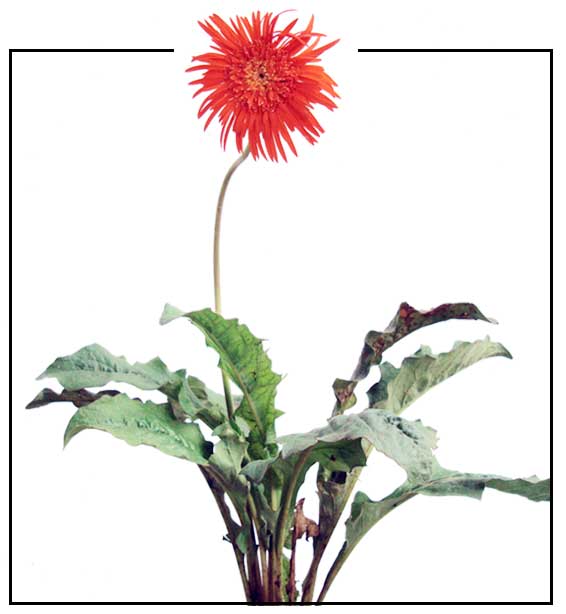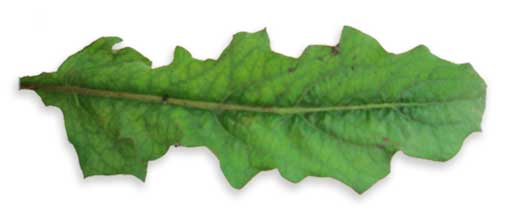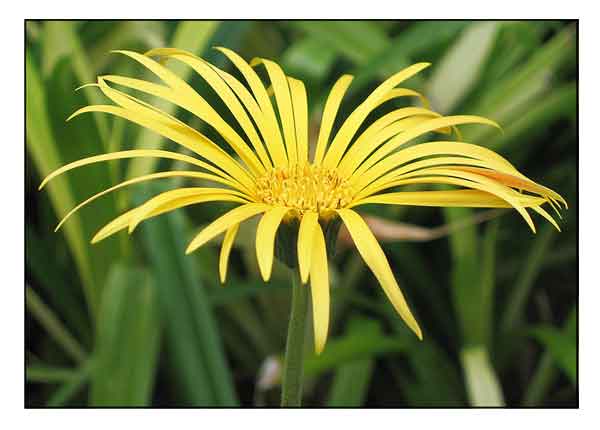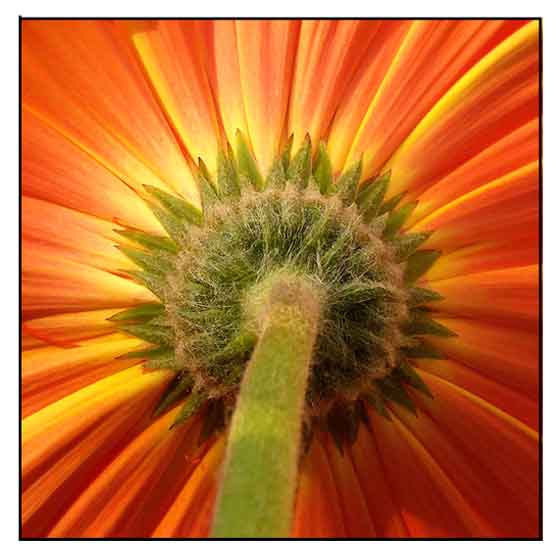|  Gen
info Gen
info
- Gerbera is a genus of plants in the Asteraceae (daisy family).
-
Genus Gerbera was named in
honor of the German naturalist Traugott Gerber and the species named
after Robert Jameson who collected the species. (6)
-
Gerbera daisy is one of the 15 plants that NASA as beneficial in purifying
indoor air by removing indoor air toxins: TCE (trichlorethylene) and
benzene. (3)
- Gerbera is widely used as a decorative plant or as cut flowers. Domesticated cultivars are mostly a result of a cross between Gerbera jamesonii and another South African species Gerbera viridifolia - the cross known as Gerbera hybrida.
- Gerbera is of commercial importance: It is the fifth most used cut flower in the world, after rose, carnation, chrysanthemum, and tulip. (16)
 Botany Botany
African daisy is a tufted perennial herb growing to 40
centimeters. Leaves form a rosette, pinnately lobed, pale green above, light
green beneath. Striking inflorescence is borne on a long stalk of up
to 30 centimeters long. Flowers are pink, red, yellow, or white with cream disc
florets.
Distribution
- Introduced.
-
Widely cultivated in the Philippines.
 Constituents Constituents
- Study yielded 6-hydroxy-4-methoxy-5-methyl coumarin from Gerbera jamesonii Bolus.
- Study on 18 cultivars showed the major pigments to be pelargonidin and cyanidin 3-O-malonylglucosides. Co-pigments identified were apigenin and luteolin 7-O- and 4'-O-glucosides, apigenin 7-O-maonylglucoside, kaempferol and quercetin 3-O- and 4'-O-glucosides and malonylated derivatives. (10)
- Study of flowers of Gerbera jamesonii isolated 11 compounds for the first time and identified as; apigenin (1), kaempferol (2), quercetin (3), dihydroquercetin (Taxifolin) (4), quercetin-4`-O-β-d-glucopyranoside (5), rutin (6), 4-β-d-glycopyranosyloxy-5-methylcoumarin (Gerberinside) (7), 5,6-dihydro-4-β-d-glycopyranosyloxy-6-methyl-2 H-pyran-2-one(Gerberin) (8), 3,4-dihydroxybenzoic acid (Protocatechuic acid) (9), stigmasterol (10) and β-sitosteryl-3-O-β-d-glucopyranoside (Daucosterol) (11).
(see study below) (17)
Properties
- Studies have suggest air-cleaning, anticancer, anti-proliferative, antimetastatic, anti-inflammatory, antioxidant, antiangiogenic properties.
Uses
Folkloric
- No reported folkloric medicinal use
in the Philippines.
- In Chinese medicinal medicine used in the preparation of tu-er-feng for curing colds and treating rheumatism. (7)
Others
- Cosmetics: Plant extract used in cosmetic and bath preparations
showing skin moisturizing and conditioning effects.
S tudies tudies
• Cleaning of Indoor Toxins:
Gerbera jamesonii has been designated one of NASA's
indoor toxin removing plants: TCE (trichlorethylene) found in adhesives, dyes, ink, etc. and benzene found in inks, oils, paints, plastics, rubber, etc. (3) NASA's Clean Air Study found Gerbera jamesonii is effective in cleaning the air of formaldehyde, benzene, and trichloroethylene. (10)
• Anticancer / Human Alveolar Basal Epithelial Cell Line: An in vitro study evaluates the anticancer activity of Gerbera jamesonii on A549-Adenocarcinomic human alveolar basal epithelial cell line. Study showed ME of Gj possesses anti-proliferative and anti-metastatic activity on A549 and was nontoxic to lymphocytes. (4)
• Coumarin Biosynthesis: Study reports the biosynthesis of 4-hydroxy-5-methylcoumarin by feeding 14C-labelled compounds to Gerbera jamesonii. The results reveal that this coumarin is formed via a pentaketide, derived from the acetate-malonate pathway, as in the biosynthesis of 5-methylcoumarin in a fungus. (8)
• Acid-Base Indicator of Dye: Study showed the benefits of using Gerbera Jamesonii and Tagetes erecta flower extract as an indicator in all types of acid base titrations because of its economy, simplicity, and wild availability. (9)
• Pigments: Quantitative study of 18 cultivars, with colors ranging from orange through lavender, showed the major pigments to be pelargonidin and cyanidin 3-O-malonylglucosides. Study also identified co-pigments viz., apigenin and luteolin 7-O- and 4'-O-glucosides, apigenin 7-O-maonylglucoside, kaempferol and quercetin 3-O- and 4'-O-glucosides and malonylated derivatives. (10)
• Natural Paints from Anthocyanin Extracts: Gerbera jamesonii is among the top 10 cut flowers in the world. It contains a high percentage of anthocyanin. The petals can be a good colorant source, as well as a good source of antioxidants. Study extracted anthocyanin pigments from fresh petals and studied the optimum condition for natural paint production. Polyurethane was used as binder in the paint formulation. Higher concentrations of colorants showed more stability with addition of polyurethane. The addition of 1% benzoic acid as co-pigment enhanced the stability of the anthocyanin color and quality of the natural paint. (12)
• Effect of Oxalic Acid on Vase Life of Cut Flower: Study showed that adding oxalic acid concentration of 50 mg/L improved flower diameter, maintained water balance, delayed decrease of soluble carbohydrate content and soluble protein concentration, inhibited the increase of MDA, thus increasing the vase life and postharvest quality of cut flowers. (13) (also see: link 14)
• Effect of Preservatives Containing Antibiotics on Cut Flowers Senescence: Study evaluated the fresh-keeping effect of four antibiotics viz. griseofulvin, lincomycin, oxytetracycline, and erythromycin on G. jamesonii cut flowers. Observing external forms and physiological effects, results indicate that preservatives containing lincomycin and erythromycin were optimum. (15)
increasing the vase life and postharvest quality of cut flowers. (13) (also see: link 14)
• Anti-Inflammatory / Antioxidant / Anticancer / Flowers: Study of flowers of Gerbera jamesonii isolated eleven compounds. Potent antioxidant activity was indicated by free radical scavenging activity ranging from 94.4 to 99.3 ug in 16.7 mg/ml of each extract, with low IC50 between 3 and 7 mg/ml. Compound 6 (rutin) showed potent anti-inflammatory activity at low concentration. All fractions exhibited anti-proliferative activity with 100% antitumor activity using 1 mg of each sample against HCT-116, MCF-7 human cancer cells and good antitumor activity against HepG-2 human cancer cells exceeding Doxorubicin with no cytotoxic activity against B-1 human skin healthy cell line. Results suggest potential for pharmacological and health applications. (see constituents above) (17)
• Antiangiogenic / Flowers: Angiogenesis is the formation of new blood vessels from pre-existing vessels, inhibition of which is an important strategy for cancer therapy. Study evaluated the antiangiogenic activity of crude aqueous flower extracts of Gerbera jamesonii, Callistephus chinensis, and Calendula officinalis. All three showed inhibition of blood vessel formation. Number of blood vessels formed is 30.33m 23.83 and 24.66, respectively, with sorafinib, an anti-angiogenic drug at 50 mcg/ml concentration. (18)
Availability
- Cultivated. |


 Gen
info
Gen
info  Botany
Botany



